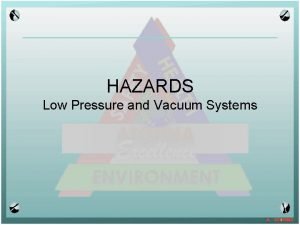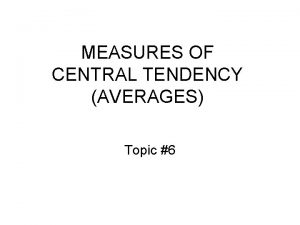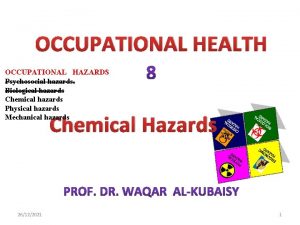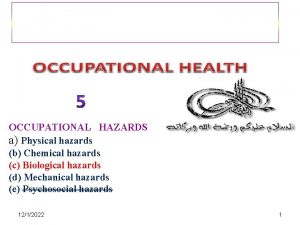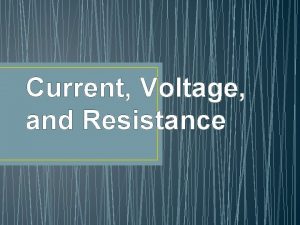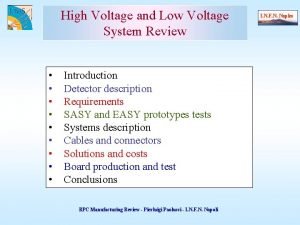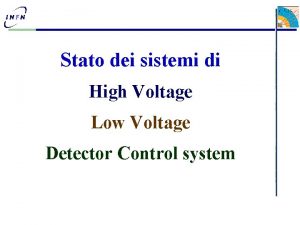Low Voltage Hazards Low voltage Higher than 50













- Slides: 13

Low Voltage Hazards Low voltage = Higher than 50 V ac, 120 Vdc Lower than High Voltage hazards can be reduced by proper system grounding Step voltage, Touch voltage, Mesh voltage, Transferred voltage

The nature of hazard The relationship of frequency to hazard-- Up to 100 HZ--- Similar effect for AC & DC Above 100 KHZ------- 10 to 100 m. A Threshold

Capacitor discharge 1 micro Farad, 10 KV—Ventricular fibrillation Specific hazard of electronics equipments Electric shock from 120 to 240, 480 V supply. Radio frequency Induced voltage Non ionizing RF radiation hazard Electrical Hazard Chemical Hazard Explosion Hazard

Medium and high voltage safety Open circuit in secondary of current transformers causes high voltage System grounding --- The connection of one of the conductors to earth. Reduce the risk to electrocution-- Protective equipments must be used. Hard hat, Eye protection, Electric arc protection, Rubber glove, Rubber insulated equipments, Voltage testing equipments.

SAFETY PROCEDURES Approach distance must be regarded Qualified person to perform the task Complete risk analysis Review and approve the plan and analysis Documentation & approval procedure Working by minimizing the risk PPE– Personal Protection Equipments must be used.

SAFETY PROCEDURES & METHODS Think , be aware Understand your procedure Follow your procedure Use appropriate safety equipments Ask if you are unsure. Do not assume Do not answer, if you do not really know.

The steps required before deenergizing All energy control devices feeding the area must be opened Lock and tags placed on energy control devices Voltage measurement Safety grounding Qualified inspector inspects the work area Test the instruments Measure the equipments being verified Re-test the instruments.

ONE MINUTE SAFETY AUDIT Notify the responsible persons of your presence in area Listen to any abnormal sounds Sniff for unusual odours Locate all fire emergency exits Locate all fire alarms and telephones Inspect all transformer insulation liquid levels, temperature and pressure Locate station one line diagram Make certain room is neat and tidy

ONE MINUTE SAFETY AUDIT Be certain that all required equipments are readily available and easily reached Check to see that all protective relays and other operational flags are properly reset ELECTRICAL INSTALLATION SAFETY Proper design Selection Installation Calibration

ENGINEERING Property testing Physical setting of devices To certain that the equipment is capable of performing when called upon.

HUMAN FACTORS IN ELECTRICAL SAFETY Sense physical stimuli Perceive and process information Act

SLOW REACTION Sleep deprivation Fatigue Time of delay Environmental extreme Alcohol Drug use Medical problem Nutrition

 Low voltage = low hazard
Low voltage = low hazard What is considered high voltage
What is considered high voltage Your love is deeper than the ocean higher than the heavens
Your love is deeper than the ocean higher than the heavens Low pressure hazards
Low pressure hazards Peak to rms
Peak to rms The objectives of earthing is
The objectives of earthing is Ac voltage controllers
Ac voltage controllers Difference between phase voltage and line voltage
Difference between phase voltage and line voltage Biochemistry of liver
Biochemistry of liver Music is a higher revelation than philosophy
Music is a higher revelation than philosophy Higher than the mountains that i face
Higher than the mountains that i face Measure of center
Measure of center Jesus higher than the angels
Jesus higher than the angels I am not my thoughts
I am not my thoughts



